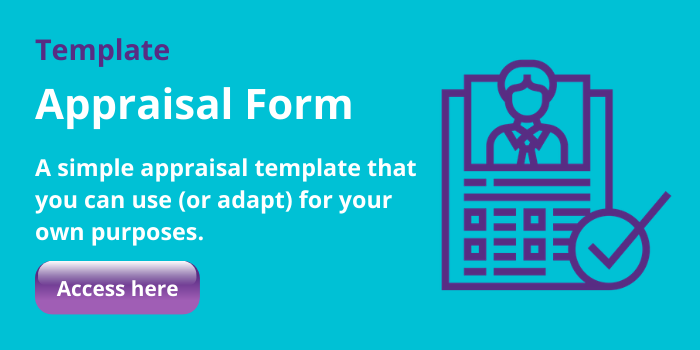How To Create A Performance Appraisal
The benefits of an effective performance appraisal system
There are many potential benefits to creating an effective performance appraisal system. You can increase productivity and engagement, reduce risk and retain talent. However, if you are to maximise your return, it is really important to ensure that the culture change aspects of the process are completed. This process can take a while as you try to create new management and cultural behavioural changes in your organisation. Thirty years of research by leadership guru Dr. John Kotter have proven that 70% of all major change efforts in organisations fail. Why do they fail? Because organisations often do not take the holistic approach required to see the change through.
The key is clear communication of expectation linked to consequences if the expectations are not met. Also, we need to remember that the appraisal cycle is an annual process that will likely take 2-3 years to embed well within your organisation.
5 steps you need to take

If you want to create an effective performance appraisal system or reinvigorate an existing one, follow these steps below:
1. Managers and staff need to understand WHY appraisal systems are important and how this aligns to the strategy
Objectives setting and appraisal should be about connecting people, processes, and business outcomes. However, too many people see appraisal as a 'tick-box' exercise to comply with once or twice a year rather than an enabler of engagement and business results. Managers can, therefore, have a direct impact on business outcomes depending on how engaged they are with performance management. A performance appraisal system without the buy-in and understanding of purpose from people managers will simply move the 'tick-box' activity online!
2. Set clear expectations around people management and use of the appraisal system
Do you have a clear annual calendar for people management activities with dates and quantities? In other words, could or have you set a SMART objective for use of the appraisal system? What you want is to create new habits. This should include expectations around 1 to 1's and development activities as well as the appraisal. Appraisals are a once or twice a year activity – not frequent enough to become a habit. But by having a frequent conversation and setting objectives, you can keep your eye on the ball. An example of such an objective might be: '90% of my team need to have a minimum of 4 objectives agreed and documented by X date, and to have had at least 6 1 to 1's over the course of the year.' Your own personal objectives could include "to have completed 90% of my team's appraisal by X date."
3. Consider tactical and aligned training
Training is most effective when it is timely, allowing people to put the skills they have learned directly into practice. Evidence shows that this is most likely to result in long-term retention of learning. This is where our expertise at Actus helps; we believe in wrapping behavioural skills around the appraisal system training and recommend a 'just in time' approach. At the start of the year, put in some support setting and reviewing objectives and then just before appraisal, how to prepare for and have a good quality appraisal. By using a 'just in time' approach to training you will get a much stronger skill transfer and of course you are re-iterating (selling!) the behavioural expectations and consequences which is part of continuing the culture change.
4. Review performance against expectations and enforce consequences

This is where most change efforts fail, for understandable reasons. If you look at Kotter's 8 step model of change, communicating the change is only step 4, yet that is where most businesses stop. There are many natural responses to change: denial, resistance, exploration. Communication on its own does not ensure that everybody changes. With the roll-out of an appraisal system, you need to communicate the positive 'Why' as in point 1, follow this up with overcoming resistance and objections through training and providing clarity of what is expected, and then it is vital to continue to communicate the expectations and enforce consequences.
In the first year of an appraisal system roll-out, we recommend positive consequences shouted widely e.g. Manager X has completed all of his appraisals ahead of the deadline or Department Y are the top performers in terms of appraisal completion. Steer clear of naming and shaming in early years; a quiet tap on the shoulder or escalation via their line manager is more effective. In later years this may change.
5. Embed it into business as usual
Keep going! This means you need to keep on communicating, embedding the monitoring of performance against expectations into quarterly reports, and following up on non-completion. Ensure key people have accountability for adding or training new starters and that is part of their job role. Ideally, incorporate the completion rates into a company balanced scorecard and aim to keep the visibility and buy-in on the radar of senior management rather than purely HR's responsibility.
So hopefully now you have a clearer idea of how to create an effective performance appraisal system or process within your organisation. If you want to understand more about the specifics of what makes an effective appraisal system, then why don't you get in touch with a member of the Actus Team or visit our product page for more information.

How To Create A Performance Appraisal
Source: https://actus.co.uk/how-to-create-an-effective-performance-appraisal-system/
Posted by: carterthreatin1945.blogspot.com

0 Response to "How To Create A Performance Appraisal"
Post a Comment